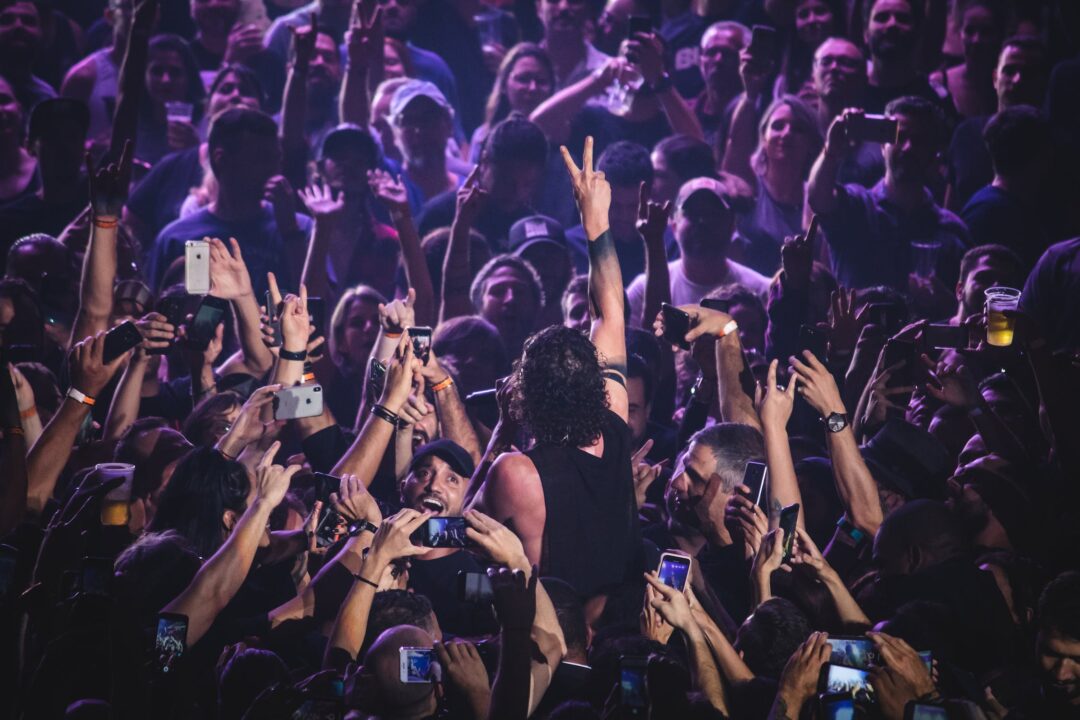For independent artists looking to break it without the backing of a record label, harnessing fan power is crucial. It takes more than playing a few good shows and recording some hit singles; a conscious effort needs to happen on the artist’s behalf to nurture relationships with superfans.
The power of the superfan may have diminished in the streaming era of music, but they are still a valuable asset and growth driver in the music industry, especially with the looming existential threat of AI and the oversaturation of streaming platforms, which are slowing down in growth. For some perspective, in the first quarter of 2023, on average, 120,000 tracks were uploaded to streaming platforms every day; a sharp rise from the 2022 average of 93,400.
With more people sacrificing their subscription services in a bid to take some pressure off their finances that are being mercilessly squeezed by the ever-increasing levels of inflation and the rate of singles uploaded to streaming services increasing year-on-year, the landscape for new and independent artists is precarious and almost impossible to navigate without using the shining light of superfans as a compass. Record labels have already noted the value of superfans; it is about time independent artists do the same and start making moves in their careers to nurture them.
After covering a brief history of the superfan, this article will cover how to increase your superfan following and create content to keep them contented.
The Modern History of Music Superfans
By contrast to the modern music age, in the 70s, 80s, and 90s, the majority of music fans were superfans; while some kept their fandom antics to buying records and gig tickets, others started zines, ran music clubs and organised events. While some of that still rings true today, the superfans are in the minority compared to how many casual music fans stump up the cash for a music streaming subscription, and that is the extent of their artist worship.
From the 70s onwards, merch became a big money spinner; while it is almost impossible to imagine the music industry without merch peddling in 2023, back in what many revere as the music heyday, official merch only started to emerge in the music industry. To further exemplify the importance of the superfan, rumour has it that the first band tee was created in the 50s when an Elvis fan club started to distribute them, and the rest was history.
In the ’90s and early 00s, it was common for superfans to head to their favourite record store and buy multiple albums every month, leading to the coining of the term ‘The 50-quid Bloke’, which describes a middle-aged music fan who would constantly be keeping tills in record shops ringing. This demographic of music fans was so influential to the music industry, their consumerist habits would shape the music charts.
Napster and The Fall of the Superfan
Napster arrived on the scene in 1999, but its internet debut didn’t become detrimental to the music industry until some years later when CD sales started to plummet. Spotify emerged just when the recorded music industry was suffering its worst crisis point in decades in 2008; if you have never heard the term, 50-quid bloke, before, that is because they started to become an endangered species and evolved into live music fans as they shifted their spending to gig tickets and the merch, they would pick up at the shows they attend.
Initially, Spotify promised to facilitate an uptick in money spent on recorded music. While they never struggled to find people to pay for monthly subscriptions, the expenditure on recorded music barely translated into revenue for musicians.
You don’t need to be a mathematical prodigy to discern that music fans spending far less than the price of a CD to access all the music they want would equate to infinitely less money being poured into the industry compared to decades ago when it was commonplace for music fans to buy multiple CDs or vinyl records a month.
Of course, there were still music fans keen to hoard records like tomorrow, and the convenience of streaming platforms didn’t take the gloss off a trip to the record shop and the satisfaction that they were supporting their favourite artists with their purchases. No doubt you know many physical music collectors, maybe you are one yourself, but make no mistake, this kind of music fan became a minority at the turn of the millennium.
Cash In on the Tentative Return of the Superfan
In recent years, industry analysts have noted that modern music consumers have started to pick up the same spending habits of 90s superfans; look at the phenomenon that Bandcamp Friday has become or consider how devout Taylor Swift fans are as they pay over the odds to join her on her tours. However, they are still on the fringes of consumer behaviour.
To amass some superfans of your own, instead of looking at ways to bleed your followers dry, look for ways to facilitate a genuine value exchange that will deepen their connection to your music.
Here are just a few of the ways you can go about it:
- Create exclusive or limited-edition merch for your fans
- Create social media content for your fans via Facebook fan groups and Patreon
- Give exclusive previews of your music and music videos
- Invite your fans to an invite-only launch show
- Host pre-gig meet-ups with your fans
- Collaborate with your fans
- Create fan loot boxes
- Go live and host Q&A sessions
–
For more guidance on how to grow your fanbase and maximise streams and sales, ask about our one-to-one consultancy services and keep reading our weekly blog for more tips on how to make an impact with your music campaigns as an indie musician.
Article by Amelia Vandergast


